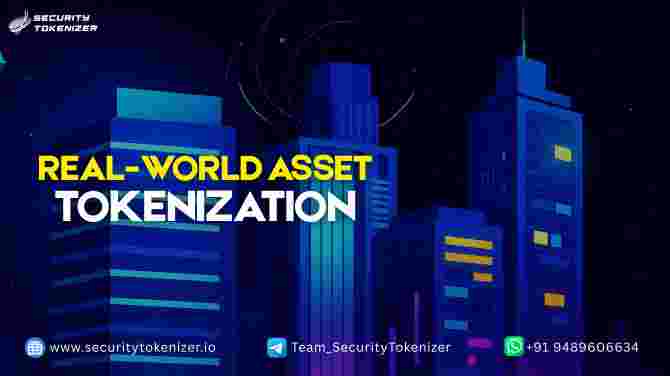Imagine owning a fraction of a luxury property, a rare piece of art, or a valuable commodity, all without the usual paperwork or hefty investment.
This is the promise of real-world asset tokenization, a process that turns physical assets into digital tokens that can be traded, sold, or held online. While it might sound futuristic, tokenizing tangible assets is becoming a reality, offering investors more liquidity, accessibility, and flexibility than ever before.
But how exactly does it work, and can physical assets truly be represented on the blockchain? Let’s break it down in simple terms.
What Is Real-World Asset Tokenization?
Real-world Asset Tokenization (RWA) is the process of converting physical assets, like real estate, art, or commodities, into digital tokens on a blockchain. Each token serves as a share of the asset, enabling ownership to be subdivided, monitored, and exchanged with ease.
Blockchain technology ensures these tokens are secure, transparent, and tamper-proof, giving investors confidence that their holdings are legitimate and accurately represented. At its core, tokenization closes the divide between tangible assets and digital finance, creating fresh avenues for investment and liquidity.
How Physical Assets Are Tokenized
Tokenizing a physical asset involves several key steps to ensure security, legality, and transparency:
Asset Valuation: The physical asset is appraised to determine its market value.
Legal Compliance: Ownership rights, regulatory requirements, and documentation are verified.
Token Creation: A digital token is generated on the blockchain, representing a fraction or the entirety of the asset.
Smart Contracts: These automate ownership transfers, dividends, or other rights, making transactions seamless and tamper-proof.
Trading & Management: Tokens can be bought, sold, or held on digital platforms, giving investors liquidity and flexibility.
Benefits of Tokenizing Physical Assets
Tokenizing physical assets opens up a world of opportunities for investors and businesses alike:
Increased Liquidity: Traditionally illiquid assets, like real estate or art, can now be traded easily through digital tokens.
Fractional Ownership: Investors can buy smaller portions of high-value assets, lowering entry barriers and diversifying portfolios.
Global Access: Digital tokens can be traded across borders, giving investors worldwide the chance to participate.
Transparency & Security: Blockchain ensures all transactions are recorded immutably, reducing fraud and increasing trust.
Faster Transactions & Launch: Tokenized assets can be transferred quickly, and businesses now have the opportunity to launch their RWA token in 7 days, making investment opportunities accessible in record time.
Challenges and Considerations
While real-world asset tokenization offers many benefits, there are important factors to consider:
Regulatory Compliance: Different regions have varying laws regarding digital assets, and adhering to these regulations is crucial.
Accurate Valuation: Ensuring the underlying asset is properly appraised is essential to maintain trust and transparency.
Market Adoption: Tokenized assets are still relatively new, and widespread adoption may take time.
Technology Risks: Blockchain platforms must be secure, scalable, and resilient against potential cyber threats.
Liquidity Management: Even though tokenization improves liquidity, market demand can still fluctuate, affecting trading ease.
Real-World Examples
Several sectors are currently utilizing real-world asset tokenization to provide liquidity and broaden investment possibilities.
Real Estate: Properties are being tokenized through real estate tokenization, allowing fractional ownership and enabling smaller investors to participate in high-value markets.
Art & Collectibles: Rare artworks and collectibles can be represented as digital tokens, providing broader access and easier trading.
Commodities: Gold, oil, and other commodities are increasingly tokenized to simplify trading and global access.
Infrastructure Projects: Large-scale projects like renewable energy or commercial buildings can be tokenized to attract diverse investors.
Wrapping Up
Real-world Asset Tokenization is transforming the way investors access and manage tangible assets. From real estate tokenization to tokenized art, commodities, and infrastructure, this innovative approach brings liquidity, accessibility, and transparency to markets that were previously hard to reach. Companies like Security Tokenizer Company are making it easier than ever to digitize assets securely and compliantly, opening up new opportunities for both individual and institutional investors.




